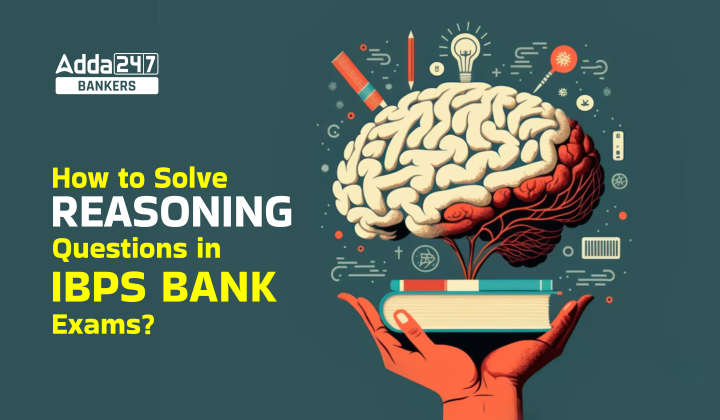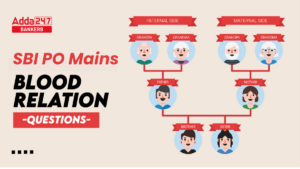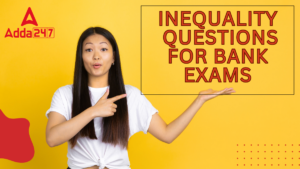Table of Contents
Reasoning Questions For IBPS Bank Exams
The IBPS exam holds considerable importance for individuals aspiring to serve as Probationary Officers in public sector banks. A career in the banking sector promises stability and avenues for professional advancement. Although IBPS has released the exam Calander for 2024 bank exams, So it’s imperative for candidates eyeing this opportunity to understand effective preparation methods and strategies.
A candidate’s approach to the exam often proves decisive in determining success or failure. Given the large number of aspirants competing in this challenging exam, comprehensive guidance becomes essential. To aid candidates in optimizing their performance in the IBPS Bank Examinations, this section offers thorough preparation tips and strategies for Reasoning Section. By adhering to these suggestions, candidates can increase their likelihood of performing exceptionally well in this highly competitive assessment.
IBPS Exams Reasoning Preparation Tips and Tricks
Formulating a well-constructed preparation strategy holds paramount importance for candidates aspiring to excel in both the Prelims and Mains sections of the IBPS 2024 Examination. It is crucial to devise a feasible study timetable that comprehensively covers all subjects. Given the competitive nature of the IBPS exams, adopting a strategic and methodical approach is essential to enhance speed and accuracy in answering questions. The IBPS Calendar 2024 furnishes detailed insights into recruitment schedules for PO, Clerk, and Specialist Officers. Vital steps such as grasping the exam pattern, formulating a practical study regimen, emphasizing conceptual understanding, consistent practice, and efficient time management can substantially amplify the prospects of success.
Understanding Reasoning Syllabus for Bank Exams
Commencing the preparation journey for the Banking Exams demands a firm understanding of the syllabus. Getting familiar with the Banking Exam Reasoning syllabus serves as a guiding map, enabling aspirants to begin their studies, evaluate the subject to be addressed, and pinpoint areas needing focused attention. The syllabus of IBPS Exams mirrors that of other banking exams, covering areas such as English Language, Quantitative Aptitude, Reasoning Ability, and General Awareness. Equipped with a thorough grasp of the syllabus, candidates can strategically plan their preparation, ensuring a comprehensive approach to addressing the various subjects in the exam. In this article, we will discuss the ways and strategies that candidates can apply to prepare for the reasoning section.
Preparation Strategies for Reasoning Section
Here are essential strategies for preparing the Reasoning Ability section of bank exams:
1. Instead of focusing on theory materials, concentrate on practicing questions directly.
2. Despite the logical nature of Reasoning, achieving high scores in this section necessitates regular practice to answer questions accurately within a limited time frame.
3. Reasoning questions in bank exams often require lengthy solutions and consume time. Hence, it’s crucial for candidates to utilize tricks and shortcuts to solve them swiftly, thereby saving time.
4. If certain Reasoning Ability questions seem perplexing, it’s advisable not to linger on them. Instead, move on to questions from other sections first and return to tackle the challenging ones later.
5. Engaging in online bank exam quizzes can also greatly benefit aspirants preparing for bank exams.
Things to Remember While Attempting Reasoning Section
In this section we have discussed few points that candidates have to keep in mind while attempting Reasoning Section.
- Read every word with maximum attention and consider all the possibilities while attempting any question.
- Never make random guesses for answering questions in the reasoning section as you may see all the options of the bank exam paper as correct.
- Identify your strong areas in this section. This can be easily figured out by practicing more and more mock tests. Try to solve as many questions which seem complex and time – consuming to you and while in exam attempts those questions which are your strength.
- Mastering syllogism can be challenging as it entails analyzing two to three statements alongside two to three conclusions. Focusing additional practice on intricate concepts will facilitate easier and quicker resolution of these questions in bank exam papers.
- Do not spend more time on questions that are difficult no matter how well-versed you are with that particular topic.
Reasoning Weightage in Banking Exams
Banking exams commonly consist of sections such as Reasoning Ability, Quantitative Aptitude, English, and General Awareness. The Reasoning Ability sections across various bank exams often vary in the number of questions and difficulty levels. It’s essential to grasp the exam format, types of questions, and scoring system to prepare effectively.
| Weightage of Reasoning Ability for bank Exams | ||||
| Exam Name | No. of Qs. of Reasoning | Marks | Reasoning section Weightage | |
| IBPS Clerk | Pre | 35 | 35 | 35% |
| Mains | 50 | 60 | 30% | |
| IBPS PO | Pre | 35 | 35 | 35% |
| Mains | 45 | 60 | 30% | |
| SBI Clerk | Pre | 35 | 35 | 35% |
| Mains | 50 | 60 | 30% | |
| SBI PO | Pre | 35 | 35 | 35% |
| Mains | 40 | 50 | 25% | |
| IBPS RRB Clerk | Pre | 40 | 40 | 50% |
| Mains | 40 | 50 | 25% | |
| IBPS RRB PO | Pre | 40 | 40 | 50% |
| Mains | 40 | 50 | 25% | |
Reasoning Questions For IBPS Bank Exams With Solutions
Directions (1-5): Each of the questions below consists of a question and two statements numbered I and II given below it. You have to decide whether the data provided in the statements are sufficient to answer the question.
(a) If statements I alone is sufficient to answer the question, but statement II alone is not sufficient to answer the question.
(b) If statement II alone is sufficient to answer the question, but statement I alone is not sufficient to answer the question.
(c) If either statement I or statement II is sufficient to answer the question.
(d) If both the statements I and II taken together are not sufficient to answer the questions.
(e) If both the statements I and II taken together are sufficient to answer the questions.
Q1. Seven persons live on seven storey building (Ground floor is 1 and top floor is 7) who among the following lives at 5th floor?
I. P lives just above R, who live above J. P lives on odd number floor.
II. Q lives just above J. Three persons live between J and F. S lives just above M.
Q2. Seven persons i.e. A, B, C, D, E, F and G are sitting around a circular table some of them facing towards the center and some face outside. Who among the following sits second to the left of G?
I. A sits third to the right of C. B sits second to the left of A and is not the neighbour of C. Only one person sits between D and E.
II. G sits third to the right of B. A and B faces opposite direction. E is not the immediate neighbour of A. D sits third to the right of G.
Q3. Among P, Q, R, S, T and U each one of them has different heights, who is the tallest person?
I. Q is taller than S. T is shorter than Q, who is not tallest.
II. U is taller than P. P is shorter than Q. R is not shortest.
Q4. Six persons i.e. A, B, C, D, E and F were born in different months i.e. January, March, April, July, August and September but not necessarily in the same order. Who among the following born in the month immediately after E?
I. C born in the month immediately before F. Only three persons born between C and A. D born before E. B born after D.
II. Only two persons born between A and B, who born in the month having 30 days. F born immediately before B. Not more than one person born between D and E.
Q5. Who among P, Q, R, S, T and U reached school second?
I. Only two persons reached before T. Q reached after R and before T.
II. R reached before P and after T. S reached after U.
Directions (6-10): Study the information carefully and answer the questions given below.
Seven persons A, B, C, D, E, F, and G are living in seven different floor building, in such a way ground floor is numbered as 1 and the top floor is numbered as 7. Each of the person studies in different std. i.e., VI, VII, VIII, IX, X, XI and XII. All information is not necessarily in same order.
Only two persons live between A and G, who lives on even number floor. One person lives between A and the one who is studying in VI. The one who studies in XI lives just above the one who studies in VIII. E lives on sixth floor and studies in XII. The one who studies in VIII lives above the one who studies in VII and below the one who studies in X. G neither study in VIII nor study in VII. One person lives between F and the one who studies in IX. B lives above D and below C. Neither A nor G study in XI. One person lives between A and B, who does not study in VI.
Q6. Who among the following person lives the top floor?
(a) E
(b) A
(c) F
(d) B
(e) None of these
Q7. Who among the following person studies in X?
(a) The one who lives on the fourth floor
(b) F
(c) B
(d) The one who lives on the fifth floor
(e) None of these
Q8. How many persons live between E and G?
(a) Two
(b) Four
(c) Three
(d) One
(e) None
Q9. Who among the following person studies in IX?
(a) The one who lives on the second floor
(b) A
(c) The one who lives on the third floor
(d) B
(e) None of these
Q10. Four of the following five are alike in a certain way based on a group, find the one that does not belong to that group?
(a) C
(b) The one who studies in VIII
(c) The one who studies in IX
(d) D
(e) A
Direction (11-16): In each of the questions below some statements are given followed by two conclusions. You have to take the given statements to be true even if they seem to be at variance with commonly known facts. Read all the conclusions and then decide which of the given conclusions logically follows from the given statements disregarding commonly known facts.
(a) If only conclusion I follows.
(b) If only conclusion II follows.
(c) If either conclusion I or II follows.
(d) If neither conclusion I nor II follows.
(e) If both conclusions I and II follow.
Q11. Statements: P>S≥T; T>Q<R; R=N
Conclusion
I: P>N
II: R≥S
Q12. Statements: A>B<C=D≥E≥ G<F
Conclusion
I: B>F
II: C≥G
Q13. Statements: J>K=L; L>N>M; M<A
Conclusion
I: J>M
II: A>J
Q14. Statements: B=Y≥X>V; V<K>Q; Q=C
Conclusion
I: B>V
II: C≤X
Q15. Statements: Z>V<N=M≥E≥B<C
Conclusion
I: B>V
II: Z≥E
Directions (16-20): Answer the questions based on the information given below.
Seven employees (A, B, C, D, E, F and G) of a company have different designations among- CEO, SM, AM, TL, SSE, SE and ASE, such that CEO is the senior most designation and ASE is the junior most designation. Five employees have different number (2, 4, 7, 10 and 22) of watches with them.
E who is AM, has 2 watches less than A. A is four designations senior to G. D who has 3 watches more than F, is junior than G. C is three designations senior to B. SM does not have odd number of watches. Difference between the number of watches of SE and ASE is more than 6.
Q16. Who is the CEO?
(a) A
(b) C
(c) F
(d) G
(e) None of these
Q17. How many persons are senior than F?
(a) One
(b) Two
(c) Three
(d) Four
(e) None of these
Q18. What is the sum of the number of watches of SM and SE?
(a) 14
(b) 24
(c) 26
(d) 29
(e) None of these
Q19. How many persons are senior than B?
(a) Four
(b) Three
(c) Five
(d) Six
(e) None of these
Q20. F and G are ___ and _____ respectively.
(a) SM, SSE
(b) AM, SE
(c) SSE, SE
(d) SE, ASE
(e) None of these
Q21. Which of the following symbols should replace the sign (%) and (&) respectively in the given expression in order to make the expression ‘U>D’ and ‘J≥G’ definitely true?
A>U≥N%C>G&D≤B=K≤J>I
(a) =, ≥
(b) =, >
(c) ≤, =
(d) =,=
(e) =, <
Q22. Which of the following will be definitely not true if the given expression T<C>X>L≥I≥O<P≤S<M≥U=W is definitely true?
(a) M>O
(b) C>I
(c) X≥O
(d) M>P
(e) W≤M
Q23. How many words can be formed from the 1st, 6th, 7th and 9th letter of a word ‘SECRETARY’ by using each letter once in the word?
(a) Two
(b) One
(c) None
(d) Three
(e) More than three
Directions (24-25): Each of the following questions consists of a statement followed by two arguments I and II. Give answer
(a) If only argument I is strong
(b) If only argument II is strong
(c) If either I or II is strong
(d) If neither I nor II is strong
(e) If both I and II are strong.
Q24. Statement: Should India become a permanent member of UN’s Security Council?
Arguments: I. Yes. India has emerged as a country which loves peace and amity.
II. No. Let us first solve problems of our own people like poverty, malnutrition.
Q25. Statement: Should the persons below the age of 18 years be allowed to join armed forces?
Arguments: I. No. Persons below the age of 18 do not attain both physical and mental maturity to shoulder such burden.
II. Yes, this can make our army more powerful.
Direction (26-30): Study the following information carefully and answer the question given below.
Seven people A, D, I, H, L, M, R are sitting around a circular table facing the center and likes different accessories viz. Bracelet, Earring, Sunglass, Handbag, Necklace, Ring and Watch, but not necessarily in same order.
L sits third to the left of M. The one who likes Bracelet sits second to the right of the one who likes Earring. The one who likes Handbag is an immediate neighbor of M. M neither likes Bracelet nor Earring. Only one person sits between the one who likes watch and L. D sits fourth to the right of the one who likes watch. A likes Sunglass and sits at immediate left of H. H sits second to the left of the one who likes Handbag. D does not like Necklace and R does not like Earring.
Q26. How many persons sit between M and I when counted in clockwise direction with respect to I?
(a)Two
(b)Four
(c)Three
(d)One
(e)Seven
Q27. Who among the following likes Bracelet?
(a)D
(b)L
(c)H
(d)I
(e)M
Q28. Who sits second to the right to the one who likes watch?
(a)M
(b)D
(c)R
(d)H
(e)A
Q29. Which of the following is true regarding M?
(a) I is an immediate neighbor of M.
(b) The one who likes Ring sits second to the right to M.
(c)Three person sits between M and A.
(d) The one who likes bracelet is at immediate left of M.
(e)M likes Necklace.
Q30. Which of the following combination is true?
(a)H-Sunglass
(b)I-Earring
(c)M-Ring
(d)L-Watch
(e)R-Bracelet
Direction (31-35): Study the following information carefully and answer the questions given below:
In a certain code:
“Bonus paid by company” is coded as “ct re dv cz”
“Paid by company” is coded as “re dv cz”
“Profit share single” is coded as “nf mp td”
“Single policy limit company” is coded as “nf gh dv lo”
Q31. What is the code for the word “Single”?
(a) td
(b) nf
(c) ct
(d) dv
(e) None of the above
Q32. What is the code for the word “Paid”?
(a) re
(b) mp
(c) cz
(d) td
(e) Cannot be determined
Q33. What is the code for the word “Company”?
(a) td
(b) mp
(c) dv
(d)gh
(e) None of the above
Q34. What is the code for the word “Policy”?
(a) gh
(b) mp
(c) lo
(d) cz
(e) either (a) or (c)
Q35. Which of the following word is coded as “td”?
(a) Share
(b) Profit
(c) Single
(d) Policy
(e) Cannot be determined
Directions (36-40): Read the given series of numbers and alphabets carefully and answer the questions based on it.
W U 5 F 6 J K 9 A 3 C E 7 8 Q O 1 2 Z 4 P D A
Q36. In the given series, how many vowels are to the right of 8?
(a) One
(b) Two
(c) Three
(d) Four
(e) None of these
Q37. How many odd numbers are immediately preceded and immediately succeeded by an alphabet in the given series?
(a) One
(b) Two
(c) Three
(d) Four
(e) None of these
Q38. What is the difference between the highest and the lowest number in the given series?
(a) 5
(b) 6
(c) 7
(d) 8
(e) None of these
Q39. Which element is 10th to the right of 7th element from the left end of the given series?
(a) O
(b) 1
(c) Q
(d) 2
(e) None of these
Q40. What is the sum of 5th number from the right end and 4th number from the left end?
(a) 15
(b) 10
(c) 14
(d) 17
(e) None of these
Directions (41-45): Study the following information carefully and answer the questions given below:
Eight persons M, F, T, B, K, Y, Q and D are sitting in two parallel rows facing each other. Each of them likes different flowers i.e., Jasmine, Hibiscus, Tulip, Lotus, Orchid, Daffodil, Rose and Sunflower but not necessarily in the same order. Persons sitting in row 1 are facing south and the persons sitting in row 2 are facing north.
Two persons are sitting between M who does not like Orchid and the one who likes Lotus. No one is sitting to the left of F who is not facing south. B who is not sitting in row 1 is not an immediate neighbor of F. D who is sitting at one of the extreme ends does not face the one who likes Hibiscus. The one who likes Rose faces the immediate neighbor of the one who likes Lotus. Q who likes Hibiscus is sitting second to the right of K who does not like Rose. The one who like Daffodil is sitting second to the left of the one who likes Sunflower. Y is not siting in row 2. The one who likes Orchid faces the one who likes Jasmine. T does not face Y.
Q41. Who among the following likes Tulip?
(a) M
(b) Y
(c) K
(d) B
(e) T
Q42. Who is sitting second to the right of the one who faces B?
(a) Q
(b) K
(c) D
(d) M
(e) None of these
Q43. Four of the following five are alike in a certain way and hence form a group, which of the following does not belong to the group?
(a) M-Rose
(b) Q-Orchid
(c) Y-Sunflower
(d) B-Jasmine
(e) T-Hibiscus
Q44. Number of persons sitting to the right of Y is the same as the number of persons sitting to the left of _________?
(a) Q
(b) T
(c) B
(d) D
(e) Both (a) and (c)
Q45. K likes which flower?
(a) Lotus
(b) Jasmine
(c) Orchid
(d) Tulip
(e) Sunflower
Directions (46-50): Answer the questions based on the information given below.
Seven persons A, B, C, D, E, F and G work in a company. They work in three different departments i.e., HR, Management and Finance. They belong to seven different cities such as Delhi, Dehradun, Meerut, Noida, Gurugram, Solan, and Mandi. At least two persons work in the same departments. All the information is not necessarily in the same order.
D belongs to Mandi and works in HR department. The one who belongs to Dehradun does not work in Finance department. G belongs to Solan and works in Management department only with B. A neither belongs to Gurugram nor works in HR department. E belongs to Delhi but does not work in HR department. F belongs to Meerut but does not work in HR department. No one from the HR department belongs to either Noida or Gurugram.
Q46. Who among the following works in the same department as C?
(a) Only D
(b) Only A and E
(c) Only F
(d) Only A
(e) None of the above
Q47. Who among the following doesn’t works in Finance department?
(a) A
(b) C
(c) E
(d) F
(e) All of the above
Q48. Who among the following belongs to Noida?
(a) C
(b) A
(c) Either A or C
(d) B
(e) Either A or B
Q49. C belongs to which of the following city?
(a) Dehradun
(b) Either (a) or (c)
(c) Gurugram
(d) Noida
(e) None of these
Q50. Which of the following combination is true?
(a) C – Gurugram – Management
(b) E – Delhi – Finance
(c) A – Dehradun – Finance
(d) B – Noida – Management
(e) None of the above
| Solutions | ||||
| 1. e | 2. e | 3. d | 4. d | 5. a |
| 6. e | 7. d | 8. c | 9. a | 10. c |
| 11. d | 12. b | 13. a | 14. a | 15. d |
| 16. b | 17. d | 18. c | 19. b | 20. c |
| 21. d | 22. c | 23. b | 24. a | 25. a |
| 26. d | 27. b | 28. c | 29. e | 30. b |
| 31. b | 32. e | 33. c | 34. e | 35. e |
| 36. b | 37. c | 38. d | 39. b | 40. b |
| 41. b | 42. d | 43. e | 44. e | 45. a |
| 46. a | 47. b | 48. b | 49. a | 50. b |






 Important Blood Relation Questions for S...
Important Blood Relation Questions for S...
 Seating Arrangement Questions for SBI PO...
Seating Arrangement Questions for SBI PO...
 Inequality Questions for Bank Exams
Inequality Questions for Bank Exams




